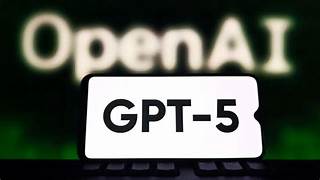
OpenAI’s GPT-5 Now Free for All: Discover What’s New and How to Access

 :
| Updated On: 11-Aug-2025 @ 8:30 am
:
| Updated On: 11-Aug-2025 @ 8:30 amSHARE
The competition to develop the most advanced AI chatbot is fierce, with OpenAI recently launching its latest large language model (LLM), GPT-5. OpenAI claims GPT-5 offers PhD-level expertise in fields such as coding and writing, positioning it as a significant leap forward. This bold claim is reminiscent of Elon Musk’s similar statements about his AI chatbot, Grok, integrated into X (formerly Twitter). GPT-5 improves upon previous versions with enhanced reasoning abilities and stronger coding skills, although some experts view the launch more as a marketing move to sustain excitement rather than a groundbreaking advancement.
GPT-5 is freely accessible to around 700 million weekly users, but usage on the free ChatGPT platform is capped. OpenAI monetizes its technology by offering subscription tiers that provide higher usage limits and access to more powerful versions. The ChatGPT Plus subscription costs $20 per month and offers “significantly higher usage” than the free tier, while ChatGPT Pro subscribers pay $200 monthly for unlimited access to GPT-5 and the advanced GPT-5 Pro version. Enterprise and Education users receive “generous limits” tailored to their needs.
A key highlight of GPT-5 is its improved coding capabilities, catering especially to beginner programmers and developers who use ChatGPT for coding assistance. OpenAI demonstrated GPT-5’s ability to build custom, interactive applications—including websites, apps, and games—on demand using simple prompts. While GPT-5 is not perfect and can make errors, its coding proficiency represents a major leap compared to earlier models.
GPT-5 introduces four preset chatbot “personalities”—cynic, robot, listener, and nerd—designed to create more natural and engaging interactions. Users can select or adjust these personalities in ChatGPT’s settings. OpenAI states these personalities were developed to address the tendency of earlier models, such as GPT-4o, to be overly flattering or sycophantic.
Another innovative feature is GPT-5’s integration with Gmail and Google Calendar, enabling the chatbot to assist with scheduling, reminders, and email follow-ups, thus enhancing productivity. This functionality will initially be available only to Pro users and is slated to roll out soon, marking a step toward making ChatGPT a personal AI agent that can pull and reference data automatically from connected apps.
One persistent issue in AI models—“hallucinations,” or generating factually incorrect information—is reduced in GPT-5. OpenAI reports that GPT-5 produces about 45% fewer factual errors compared to GPT-4o. Nevertheless, hallucinations have not been eliminated entirely, and users should remain cautious about relying on the chatbot for critical information.
Health-related queries represent a growing use case for ChatGPT. GPT-5 scores higher than any previous version on the HealthBench test and behaves more like an “active thought partner,” proactively flagging concerns and asking clarifying questions. However, OpenAI stresses that GPT-5 is not a substitute for medical advice, and users should consult professionals for health decisions.
Usability improvements include GPT-5’s “real router” feature, which intelligently selects the appropriate model based on the complexity of the conversation and user prompts. Powered by a reasoning model, GPT-5 can think more deeply about problem-solving. Despite these advances, OpenAI acknowledges that GPT-5 is an evolutionary step rather than a revolutionary breakthrough toward artificial general intelligence (AGI)—the ultimate goal for AI developers. Like incremental updates seen in smartphone releases, GPT-5 refines and enhances existing capabilities but does not yet achieve true human-like general intelligence.
In summary, GPT-5 offers significant improvements in reasoning, coding, and user experience, with new integrations and personalities enhancing interaction quality. It remains a powerful tool accessible to millions but also highlights ongoing challenges in AI development, including managing hallucinations and the path to AGI.